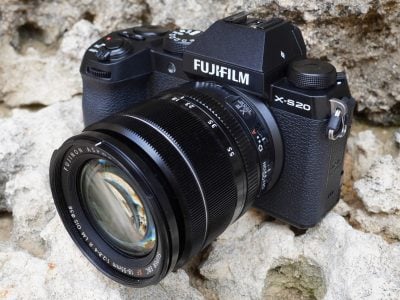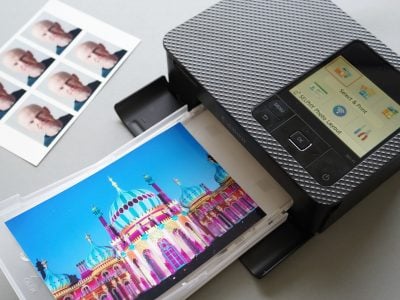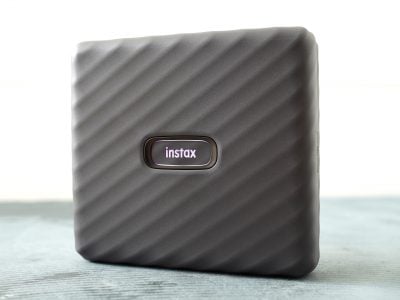Panasonic DMC-FZ30 review
-
-
Written by Gordon Laing
Like most long-zoom all-in-ones, the FZ30 greatly resembles a traditional digital SLR in design and operation, although of course lacks the ability to swap lenses. Measuring 141x86x138mm, it’s slightly wider but also slightly shorter than typical small Digital SLRs like the Canon EOS-350D. It’s pictured below next to its 10.7x-zoom rival the Fujifilm FinePix S9500 / S9000.
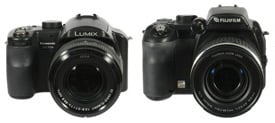
This additional width – which becomes obvious when viewed from the front – has allowed Panasonic to implement a generous, deep grip with plenty of room between your right fingers and the lens barrel. It’s comfortable in use and the build quality, not to mention overall design, feels of a higher standard than most all-in-ones including the Fujifilm S9500 / S9000 – it’s a very smart-looking camera. For details of the lens, see the following page.
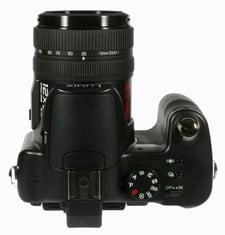
Unlike some cameras which are liberally sprinkled with buttons and dials on every surface, the bulk of the FZ30’s controls are limited to the upper right surface and to the right of the screen at the back. The upper surface houses a small power switch, buttons to select the Image Stabilisation and continuous shooting modes, along with the main mode dial.
The mode dial offers the usual Automatic, Program, Manual, Shutter and Aperture Priority modes along with selecting playback, a movie mode, or two user-defined Scene options. Shutter speeds range from 1/2000 to 60 seconds, while exposure compensation is offered from +/-2EV in third stop increments.
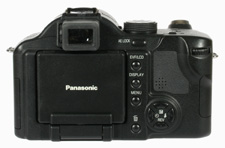
Four joypad-style buttons on the rear allow you to open the self-timer, exposure compensation and flash options, along with reviewing the last image taken, but in order to change ISO and white balance settings, you’ll need to enter the main menu system; they are at least the first two options presented there though. A pair of dials positioned for your thumb and index finger work with various shooting modes to scroll through options.
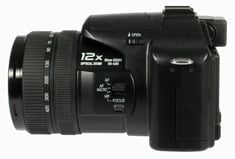
There’s a pop-up flash above the lens and a standard hotshoe located behind it. Slow-synchro and red-eye reduction modes are offered, along with flash compensation of +/-2EV.
The camera’s powered by a compact 710mAh Lithium-Ion battery and is supplied with a recharger. Panasonic claims each charge should be good for 280 shots under CIPA standard; certainly a single charge lasted for our entire testing period, including many longer exposures during cold night conditions.
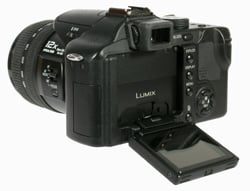
Panasonic FZ30 composition and screen
Like other all-in-one cameras with long zooms, the FZ30 offers the choice of composition using either a colour LCD screen or electronic viewfinder, EVF. The EVF is larger and more detailed than its predecessor and many rivals, measuring 0.44in and sporting 235K pixels. The main 2in display is also very detailed for its size, boasting 230K pixels.
The EVF is automatically activated if the display is flipped into the body, face-inwards for protection. With the display facing outwards though, you can manually switch between it and the EVF using a button.
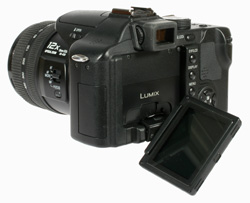
The main display itself is a flip-out and twist design, with the hinge at the bottom of the camera. While this allows a more sensible waist-level shooting configuration without the screen poking out to one side, it does mean the screen can in some instances fold out below the body. It’s still preferred to the limited tilting (and smaller) screen of Fujifilm’s S9500 / S9000 though.
In use the FZ30’s screen is bright and detailed, and pressing the display button cycles between five options: no information, shooting information, shooting information with live histogram, a slightly reduced view with information in the right and bottom edge, and a three by three grid pattern to aid composition
